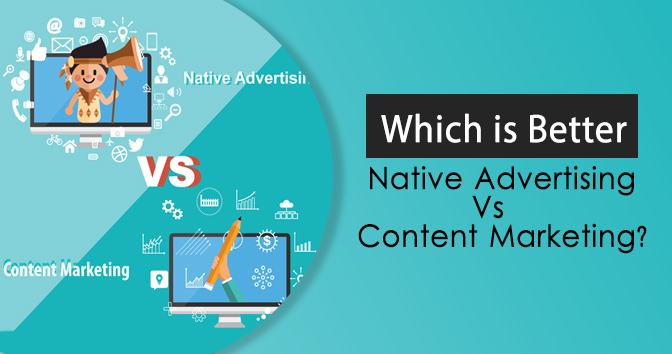
You can use research to find out the demographics of your target audience to help determine the content and tone of your marketing strategy. Know the age range and demographics of your competitors. What are their interests? What are their common interests? This information can help you develop a marketing strategy to attract your target audience. Below are the key components of a winning marketing strategy. Understanding your target audience is essential to choosing the right marketing strategy.
Guide to building a content marketing plan
The key components of a content marketing strategy are many. These two key elements are important: creating a brand strategy and a content schedule. Without a plan you won't be able achieve your marketing goals. It can be challenging to create a strategy but it will pay off in the long-term. Here are some things you should keep in mind.
Your target audience. This will allow you to create content that is valuable and relevant for your audience. Knowing your target audience is crucial to creating content that will ultimately drive conversions. For example, if you're trying to increase revenue, you'll want to focus on the sales and leads that come from your content. TikTok, popular among teens, is the best video platform to target a younger audience. A successful content marketing strategy requires time, organization, creativity, and tools.
It will be easier to create content that is more effective if you have a well-defined and clear content strategy. It will be easier to track the success of your content strategy. Be sure to measure your efforts against your goals. Then, you can track your progress and refine your strategy. You'll be able to build a loyal customer base and increase your company’s authority online through content marketing. In addition to content measurement, you'll need to develop a plan to publish your content on other channels.
Examples of content marketing strategies
Content marketing strategies are vital for anyone looking to make sales or generate leads. This type of content allows you to engage and start conversations. You can also implement a content promotion strategy to reach the most people possible through social media. A central core of content is found on your website, homepage. It can then be reused through other channels like email, videos, and blog posts.

A distinctive brand voice is key if your company wants to be unique. A recent Sprout Social survey found that 33% of consumers prefer brands with distinct personalities. So how do you make your content more distinctive? Here are some examples of content marketing strategies:
YouTube videos are an increasingly popular medium to reach a broad audience. YouTube channel GoPro is an example of a content marketing company that uses video. Buffer, a popular video sharing platform, uses video to drive exponentially more traffic. After just nine months, it reached 100,000 customers. It's even better than that! This will allow you to monitor the performance of your content, and decide if it is working. Your content strategy will ultimately help you determine how your efforts affect your business.
What are the key elements of content marketing strategy?
The Five Cs of a content strategy for content marketing are company focus and content creation. Check-back analysis is also a key component. And channel promotion. This will allow a content marketer cover all bases to create an effective content plan. Content marketers must be strategic to gain attention in today's competitive environment. This process is not easy. These are the essential elements you should have in your content-marketing arsenal if content creation and implementation is difficult for you.

Understanding the audience. Your audience is not just buyers. It can also include potential customers. Knowing what customers want is crucial before creating content that will help them make an informed decision. You need to identify your audience and create buyer personas before you can achieve your content marketing goals. To better target your content creation efforts, it is important to clearly define your audience. You can create a compelling content plan for your audience by identifying their interests and needs.
Your strategy should include details about the product, service, or category you want to target. You must also identify the messaging you want to use and any potential obstacles. Once you have identified your target audience you will need to create a content platform which can convert them. You can use landing pages, blogs and websites as content marketing platforms. Your content must be tailored to their needs, and deliver measurable results.
FAQ
What is Content Marketing Strategy?
Content Marketing Strategy grants you access to data that you would not otherwise have. This data allows you to measure which types of content perform better than others.
It will help you determine the best strategies to increase traffic to your website. It can also give you insights into the behaviour of your audience, so that you can produce even better content.
This allows you to spend less time worrying about which content is good and more on what works.
A Content Marketing Strategy also helps you analyze what messages resonate most with your audience.
This analysis will allow you to determine which content they like. You can then create similar content and continue to develop your successful ideas.
A Content Marketing Strategy can help you track the performance of your content. By sharing content, you will be able to easily identify which types of content converts better.
A Content Marketing Strategy, in other words, is key to ensuring that your content performs as expected.
How can I determine success with content marketing
There are several ways you can measure the effectiveness and impact of your content marketing efforts. One way to measure the effectiveness of your content marketing efforts is to monitor how many visitors visit your website. Another option is to monitor how many leads are generated.
Why is content so important
Digital marketing campaigns are dominated by content. In order to attract new customers you will need to create relevant content. Blogging is the best way to achieve this. Blogging builds authority in your niche which makes you more trustworthy. This trustworthiness increases your credibility, which in turn leads to higher search engines rankings. Organic searches are more popular than search engine rankings.
How easy is content marketing to measure?
Yes! It's part of the process. This helps you to determine if your efforts were successful or if you need to make adjustments.
It is possible to track the number of visitors from different sources, including organic search, email and social media. You can also track conversions such as sales leads or purchases.
These metrics will show you which pieces performed well and highlight your most important opportunities.
Statistics
- Seventy-two percent business to business (B2B) (mailchimp.com)
- In fact, would pay more for a better customer experience, and 86% of B2B buyers would pay more. (neilpatel.com)
- We found that 40% of businesses don't have a documented strategy yet. (semrush.com)
- Measure your goals with a progress indicator of 0-100%. Make your goals collaborative and transparent (semrush.com)
- According to our research, 65% of companies with very successful content marketing in 2021 ran content audits at least twice a year. (semrush.com)
- This marketing strategy landed Ford a 15.4% conversion rate. (neilpatel.com)
- Out of the 1,500 marketers we surveyed for our State of Content Marketing report, 78% who felt their content marketing strategy was exceptionally effective in 2021 had documented their strategy. (semrush.com)
- To further show the importance of this, 89% of people have stopped doing business with a company because of a poor experience. (neilpatel.com)
External Links
How To
Infographic Creation Tips for Content Marketing
Infographics make complex concepts simple and easy to understand. Content marketing aims to provide useful and valuable information to your target audience, so you should consider using infographics to help spread this message.
You'll need design software such as Adobe Illustrator or Photoshop to create an infographic. These programs allow you to create infographics by drawing different shapes and elements. You can then use colors and fonts for your data. Once you are happy with your design, you can upload images to Unsplash and Pixabay for your design.
Looking at other infographics online can help you get ideas. For example, if you want to show how many calories are in certain foods, you could take a picture of a food pyramid and replace the numbers with pictures of those foods. Another option is to take a picture of a can of Coke and look at how much sugar it contains.
Once you've created your infographic, share it on social media channels like Facebook or Twitter. This allows people to learn more about the concept, even if they aren't familiar. If you decide to post your infographic on social media platforms, include hashtags so others can see what you're talking about. Users can follow conversations around specific topics using hashtags.
Make your infographics shorter than normal if you are creating them. An average blog post can be anywhere from 2000 to 5000 words long, while an infographic only requires 500 to 1000 words. This means that you can convey more information in a shorter space.
Your infographic should be easy to read for some viewers. It is important to use large fonts and avoid relying too heavily on colors when designing your infographic. Also, make sure that all your text is legible.
Here are some other tips.
-
Choose an Infographic Template. You can find many templates online or in printed formats. Canva (Piktochart) and Google Slides (Google Slides) are some of the most requested templates.
-
Create your Infographic. Create your infographic using the template. You can use whatever media is most appropriate for your audience. An example of this is a infographic that shows the best restaurants in Seattle.
-
Add Text. After creating your infographic, add text with Microsoft Word, PowerPoint, and Canva.
-
Add Images. Add images to your infographic. These images can be charts, graphs, icons, or pictures. If you want to add a picture, make sure it's relevant to your topic.
-
Make It Interactive. You can add interactive elements such as buttons, maps, and links. This will help engage your audience.
-
Share. Share the infographic once you're done.
-
Measure. What was the performance of your infographic? Did they click through to your site? Did they sign up for your email list? Was your infographic received well by them?
-
Improve. Are there ways you could improve your infographic? Could you do better next time?
-
Repeat. Repeat.